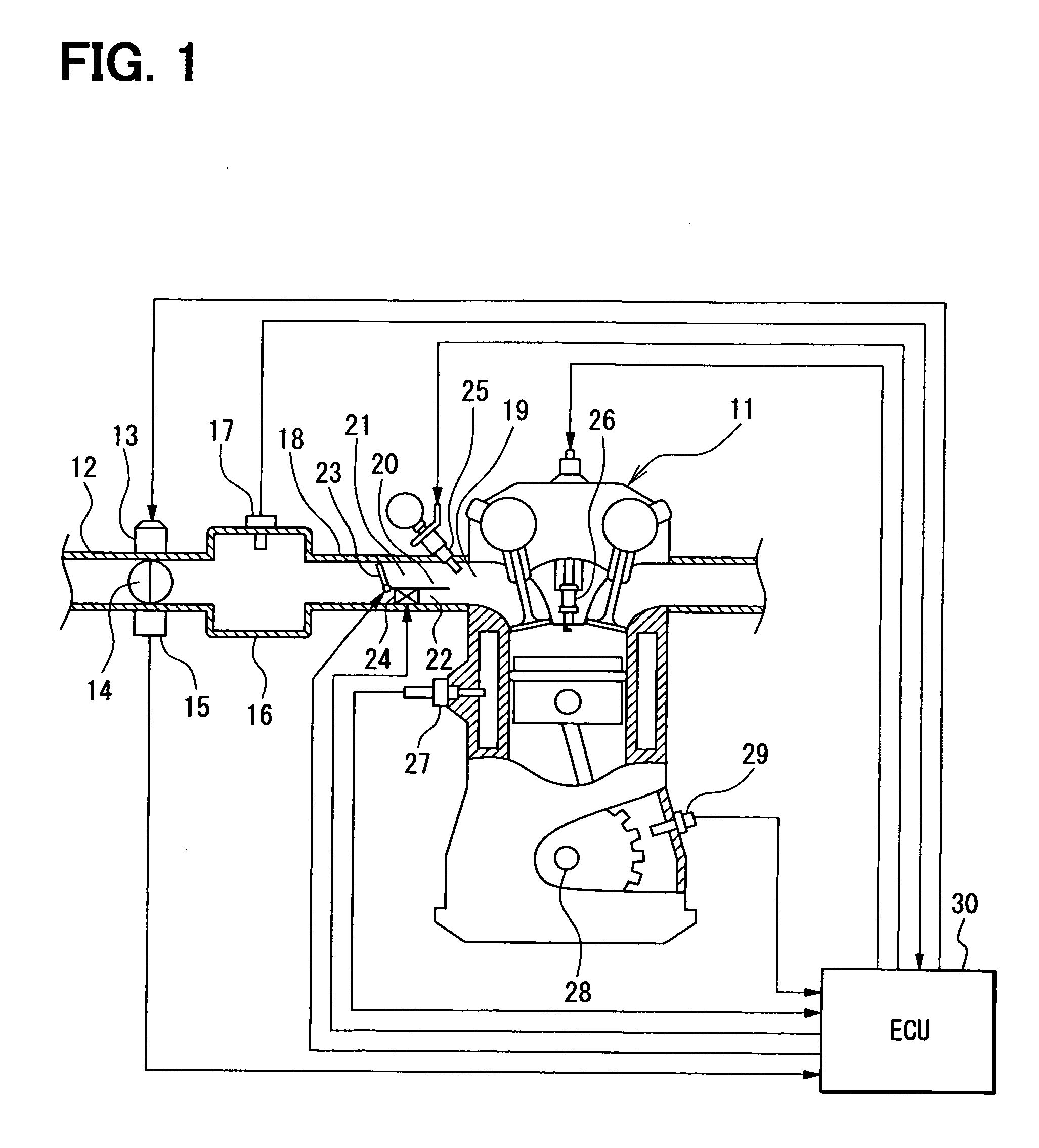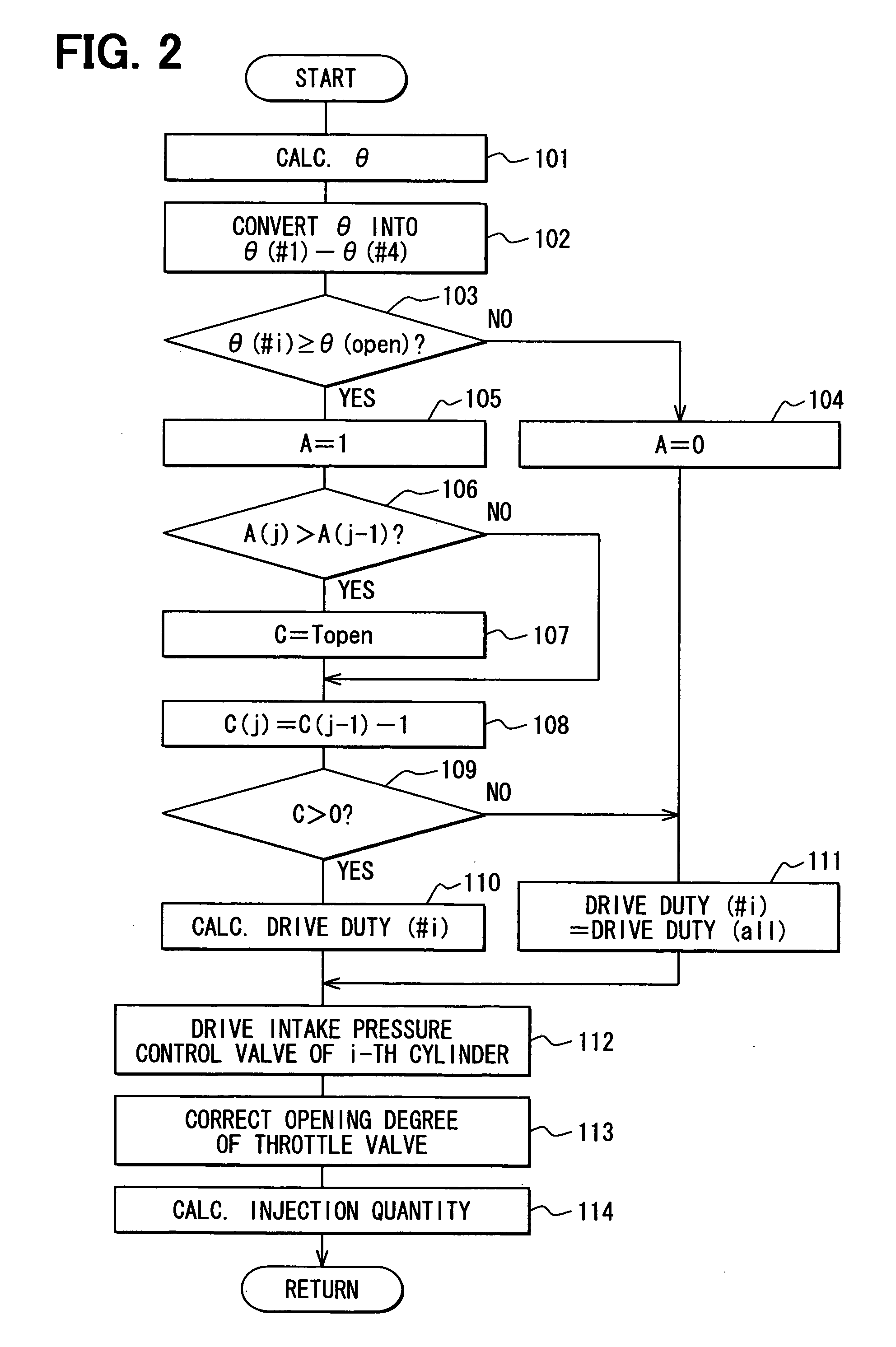Intake control device for internal combustion engine
a control device and internal combustion engine technology, applied in the direction of electric control, process and machine control, instruments, etc., can solve the problems of insufficient flow in the combustion chamber, and insufficient supply of higher fuel efficiency, so as to improve the combustion condition, reduce the effect of pumping loss and negative pressur
- Summary
- Abstract
- Description
- Claims
- Application Information
AI Technical Summary
Benefits of technology
Problems solved by technology
Method used
Image
Examples
first embodiment
[0025]The general structure of an engine control system will be described referring to FIG. 1.
[0026]An internal combustion engine, for example, an in-line four-cylinder engine 11, has four cylinders (cylinders #1 to #4) and upstream of an intake pipe 12 of the engine 11, a throttle valve 14 the opening degree of which is controlled by a motor 13 and a throttle opening sensor 15 which detects the opening degree of the throttle valve 14 are provided.
[0027]A surge tank 16 is provided downstream of the throttle valve 14 and an intake pipe pressure sensor 17 for detecting intake pipe pressure is provided on the surge tank 16. An intake manifold 18 which introduces air into each cylinder of the engine 11 and the downstream portion of the intake manifold 18 of each cylinder is connected with the intake port 19 of each cylinder.
[0028]In the downstream portion of the intake manifold 18 or intake port 19 of each cylinder, there is provided a partition 20 which partitions the intake path into ...
second embodiment
[0057]In the first embodiment, as shown in the time chart of FIG. 7, downstream-pressure-increase control is carried out by controlling opening and closing of the intake pressure control valve 24 of each cylinder so as to make the downstream-intake-pressure higher than the in the system without an intake pressure control valve 24 (system in which the lower path 22 is always open) at least during the intake stroke of each cylinder of the engine 11 while the tumble control valve 23 of each cylinder is closed. In this downstream-pressure-increase control, the intake pressure control valve 24 of each cylinder is closed around the start of the intake stroke (for example, 30° CA after intake TDC) of the cylinder and opened during the explosion stroke after the end of the intake stroke of each cylinder (for example, 300° CA before intake TDC).
[0058]As indicated by solid line in FIG. 7, the intake pressure control valve 24 is closed around the start of the intake stroke to close the lower p...
PUM
 Login to View More
Login to View More Abstract
Description
Claims
Application Information
 Login to View More
Login to View More - R&D
- Intellectual Property
- Life Sciences
- Materials
- Tech Scout
- Unparalleled Data Quality
- Higher Quality Content
- 60% Fewer Hallucinations
Browse by: Latest US Patents, China's latest patents, Technical Efficacy Thesaurus, Application Domain, Technology Topic, Popular Technical Reports.
© 2025 PatSnap. All rights reserved.Legal|Privacy policy|Modern Slavery Act Transparency Statement|Sitemap|About US| Contact US: help@patsnap.com



